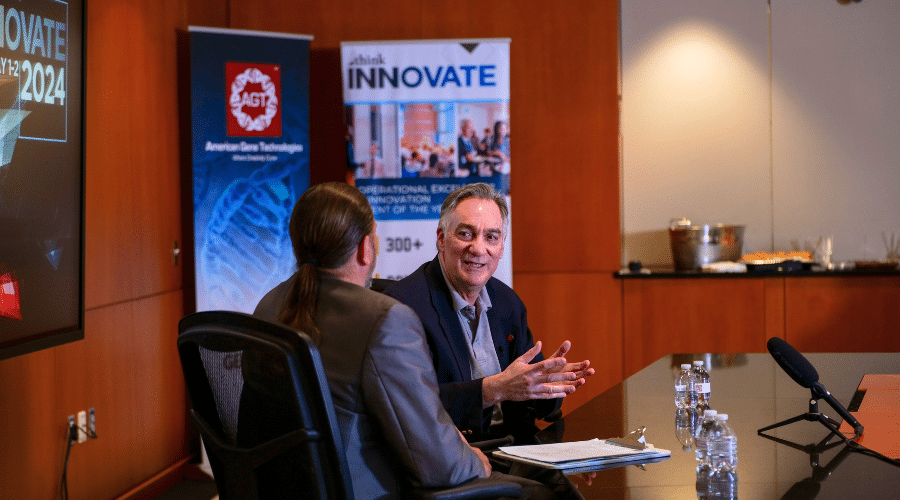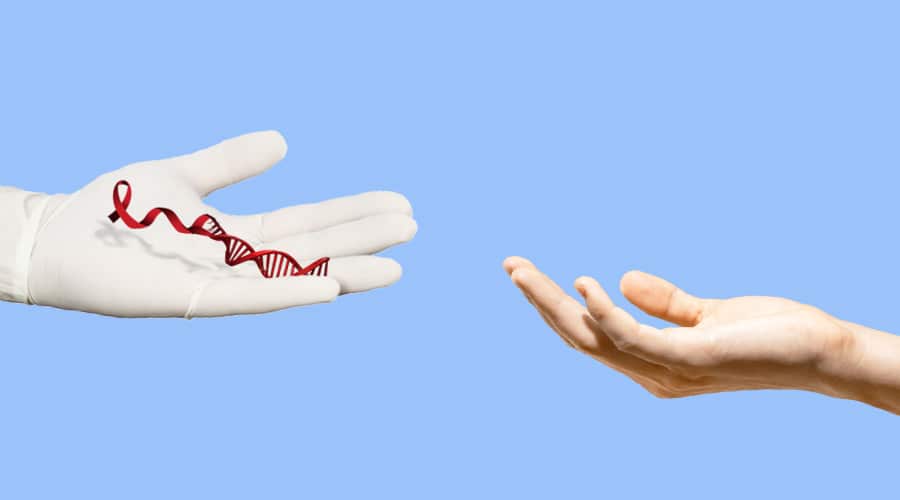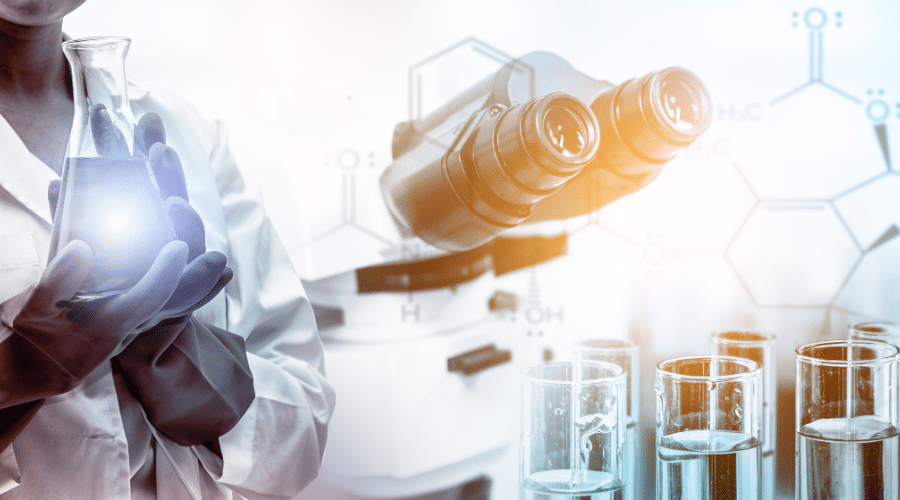Black Pioneers in Biology Who Ushered Us Into the Genetic Age
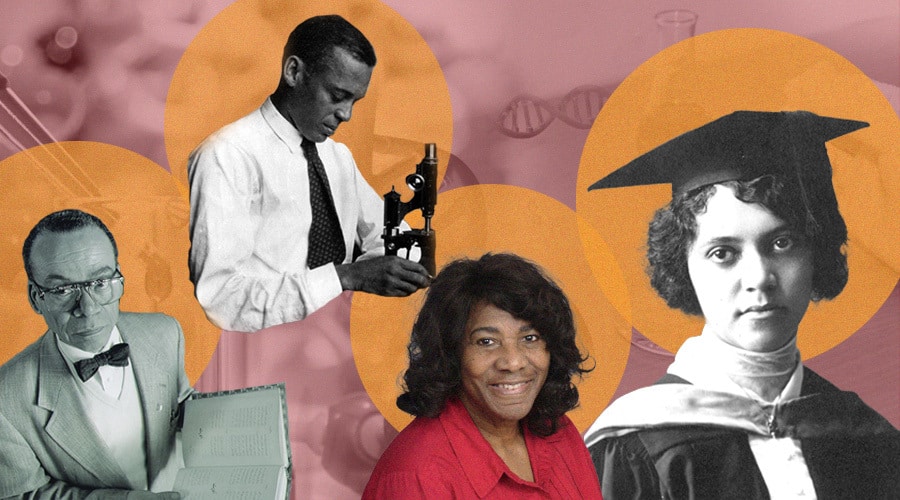

Contributing Author Luke Williams, Sales and Marketing
Meet the scientists who revolutionized our understanding of biochemistry and reframed the human identity
For Black History Month, American Gene Technologies® spotlights four of the many influential Black scientists whose work helped launch the genetic age that is revolutionizing biological and medical research, with massive societal and economic implications. We explore the achievements of Georgia Dunston, PhD; Ernest Everett Just, PhD; James E. Bowman, MD; and Alice Ball.
These scientists stepped into the unknown to conduct pioneering research that shaped our understanding of human genetics. They not only materially improved the lives of millions through better technology, but challenged divisive notions of what it means to be human.
The world these four scientists inhabited was vastly different than the one we know today. And the one we know today would not have been possible without their groundbreaking work. For example: No one knew a century ago that the human genome had 3 billion base pairs. The discovery, thanks to Phase 1 of the Human Genome Project (HGP), that humans on earth today are on average 99.9% identical at the DNA level, was still many years away. The revelation that there is more variation within racial groups than between them, which blurs the lines that humanity has used to divide itself for centuries, remained far in the future. Just imagine how our understanding of genetic information, which they helped make possible, will shape the way people view themselves and others in the future.
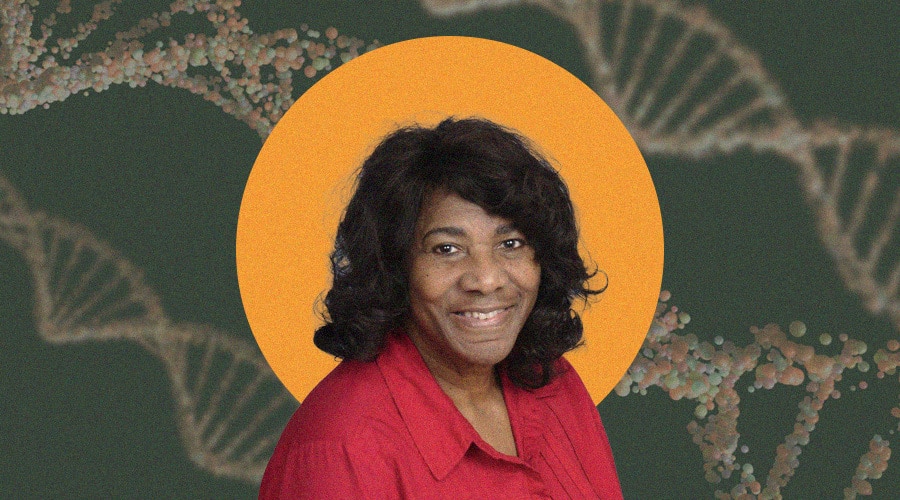
Georgia Dunston, PhD
Why do some people recover from illness while others don’t? It’s a question as complex as the human body, and one that Dr. Dunston elucidated during her inspiring career. Georgia Dunston was born in a segregated South and grew up during the civil rights movement. Her dedication to science from a young age gave her the fire she needed to push through a system stacked against her. Her academic story arc began with a BS in Biology from Norfolk State University, followed by a master’s from Tuskegee University, both Historically Black Colleges. Upon entry to the Human Genetics PhD program at the University of Michigan in Ann Arbor, a historically white institution, Dunston faced adversity as a woman of color in science.
“It was very clear that some of those opinions were based not only in being Black but also in being a woman in science.” Dunston recalls during an interview immortalized in the NIH National Human Genetics Research Institute’s oral history collection. However, her will to solve the mysteries of human genetics was unwavering, commanding respect. Dunston recalls the change in her advisor over time: “I was the first, or one of the first, that he had a graduation dinner for at his home. Okay, so we covered some territory from ‘you don’t belong here’ to ‘I’m proud that you’re finishing and that I’m your advisor.’ There was a lot over those five years. Here I am, a PhD.”
During her postdoc at the NIH’s National Cancer Institute, Dunston met Francis Collins, a lead scientist for the Human Genome Project (HGP). Together, they examined the genetic basis for the difference in how Type 2 Diabetes manifests in West African populations compared to those from Finland. During this time, Dr. Dunston founded a laboratory for human immunogenetics at Howard University, making their collaboration highly synergistic. In parallel with Collins’ interest in Type 2 Diabetes, Dunston was also interested in understanding the genetic variations relevant to the immune system in Africans. The process of acquiring, testing, and analyzing samples from African populations helped both researchers answer their questions about genetic variations across human populations and added African representation to the HGP.
The Human Leukocyte Antigen (HLA) system plays a major role in immune recognition, and matching HLA profiles can prevent rejection of transplanted organs. Dunston’s laboratory identified genetic variations in HLA across human populations, using the variations as a way to tie the raw genetic code to differences in disease manifestation. Dr. Dunston explains,“The genome sequence would not have any interpretation without knowing how to translate variation.”
Without Dr. Dunston’s unshakable interest in the genetic variations between populations, the relationships between genetic identity and disease manifestation would not be as well-described as they are today. Autoimmunity, transplant, and the wider field of immunogenetics are as advanced as they are today due to her work. Dr. Dunston achieved excellence, and we all live in a better world because of it.
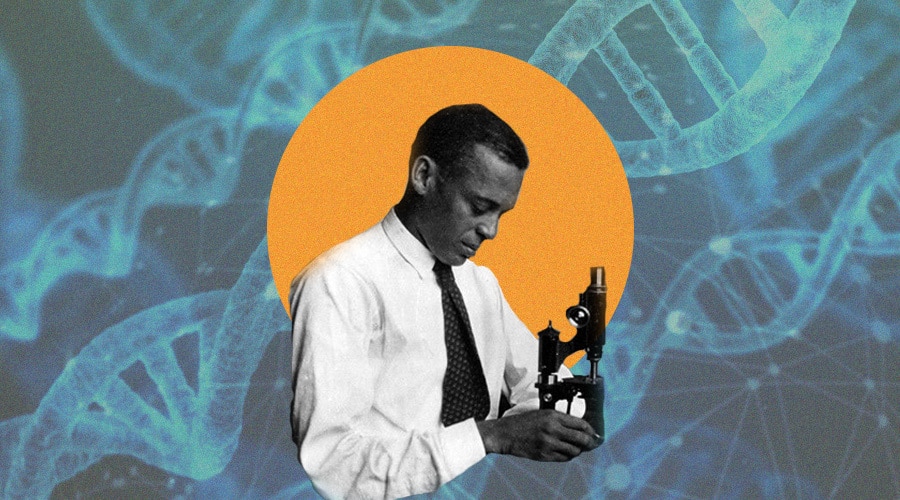
Ernest Everett Just, PhD
How does a single cell give rise to an entire human being? Conversely, how can cells adopt identities like neurons, epithelial cells, bone and so on – even though they have the same genome? Enter Ernest Just, the forgotten father of epigenetics. In pursuit of the mysteries of life, Dr. Just focused on the biological processes of egg cell fertilization, and how embryos develop separate cell types from the most primitive human cells. Just was a professor of biology at Howard University, and earned the first Spingarn Medal from the NAACP in 1915. Just’s opposition to prevalent ideas in the academic discussion of biology and the resulting conflict led to a modern understanding of the cell, forever impacting modern biology, and ushering us into the genetic age.
Just showed talent in science and debate at a young age. These interests permeated his career, combining in his mind with a strong voice. As the only Black student entering Dartmouth in 1903, and the only member of his graduating class to attain magna cum laude, Just was not afraid to stand out. His blend of scientific and debate skills made him a natural translator from scientific fact to logical speech, and he appreciated the work of other great communicators. Alain Locke, also known as the philosopher of the Harlem Renaissance, was one of Just’s oldest friends, and Just was known to have immersed himself in the cultural contributions of authors like Du Bois, Locke, Herskovits, and Boas.
Perhaps it was this combination of cultural influence and scientific prowess that empowered Just to speak against Thomas Hunt Morgan’s Gene Theory, which was gaining prevalence at the time. As the search for answers on life’s great mysteries intensified, biologists were gravitating towards a nucleus-centric view of the cell. While part of Gene Theory still holds today, Just challenged the idea that the nucleus was the central actor and asserted a role of cytoplasmic factors in determining the identity of cells, Just’s Theory of Genetic Restriction.
Just’s voice was not ignored, in fact, according to W. Malcolm Byrnes, “Scientists who heard Just present his theory at the 1935 meeting of the American Society of Zoologists wrote for reprints and saw him as ‘one of the most creative men in zoology in the United States.’” Despite his clear intellectual capability, multiple factors such as his geographic location (Just often worked in Europe), a lack of academic citations for a theory which contradicted aspects of the prevailing Gene Theory, and institutional racism, led to a lack of traction for Just’s theory.
Today, our modern understanding of epigenetics shows that Just’s opposition was justified, and indeed, cytoplasmic elements do interact with the genetic information stored in the nucleus. While Just’s view overstated the importance of cytoplasmic factors on the nucleus and Morgan’s overstated the importance of intranuclear elements, we now know that there are intranuclear noncoding elements, cytoplasmically assembled transcription factors, and signaling cascades that determine cell identity, and even allow complex interactions between the cell and its environment.
Just lived through a time where Jim Crow laws made racial segregation legal and enforceable. In the early and mid 1900’s, eugenicists like Henry Osborne and Charles Davenport influenced the societal mindset with pseudoscientific arguments on white supremacy. Not only did Just achieve outstanding academic feats, discover unknown aspects of embryology, and influence a major course correction on the scientific understanding of the cell, he did it all while rising above an environment focused on keeping him down by misusing the very biological concepts he studied. Epigenetics means a lot to us here at American Gene Technologies®, and we’re glad to live in a world where our work is possible thanks to Just’s ability to dismantle misinformation.
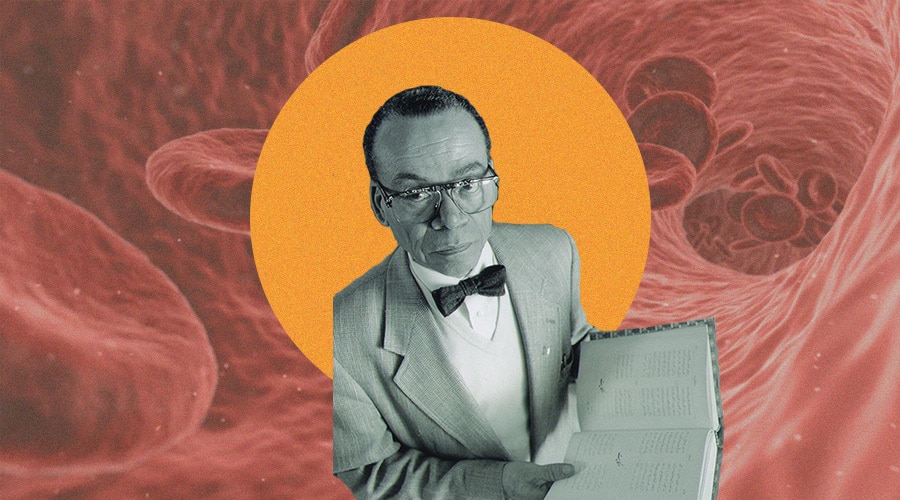
James E. Bowman, MD
Dr. Bowman was a mentor, a fighter for biological ethics, a world traveler, and an accomplished doctor. In his memory, The University of Chicago’s Pritzker School of Medicine holds periodic lectures through the Bowman Society, immortalizing his legacy of mentorship. After earning his bachelor’s degree in biology from Howard University in 1943, Bowman was drafted into the Army, where he completed his medical degree. Bowman was a trailblazer at St. Luke’s Hospital in Chicago, where he was the first African American resident. After another Army draft assigned Dr. Bowman to Fitzsimons Army Hospital in Denver for two years, Bowman and his wife decided to move to Iran, fleeing the segregation conditions that persisted in the United States.
In Iran, Bowman was introduced to Favism, an intriguing condition where affected individuals can develop anemia after consuming Fava beans. Bowman’s curiosity was piqued, and he focused his research on understanding the genetics involved in Favism. By comparing the genetic makeup of various populations, Dr. Bowman identified deficiency in the glucose-6-phosphate dehydrogenase (G6PD) gene. Without G6PD, red blood cells are vulnerable to reactive oxygen species (ROS) and the death of these cells leads to anemia. This observation helps explain why eating Fava beans, which increases ROS concentration in the blood when metabolized, causes anemia in individuals with this genetic condition.
Not only did Bowman identify the G6PD link, he took further action to safeguard people in areas where malaria is common. Primaquine, an anti-malarial drug, increases ROS concentration in the blood – and Bowman’s research ties with the University of Chicago helped identify the potentially fatal interaction Favism patients can have with Primaquine.
Through his mentorship focus, Dr. Bowman played a direct role in increasing the standard of care through well-supported mentees. The doctors he trained, their patients, and their families all directly benefited from his work, as did patients affected by Favism. Indirectly, the entire field of medicine benefited from his contributions to the complex web of pharmaco-genetic interactions that we now use to optimize individual care.
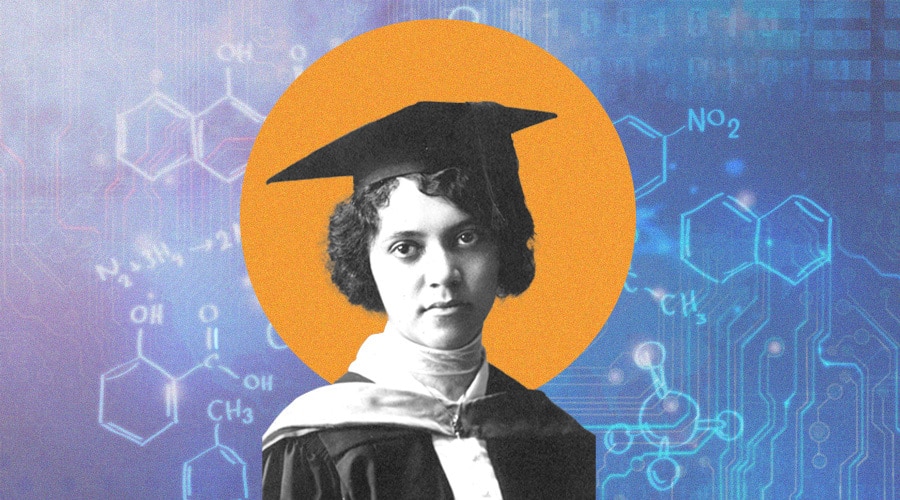
Alice Ball
Our modern understanding of biochemistry permits a mechanistic view of the human body, a view that wouldn’t be possible without a solid foundation in organic chemistry. Step back in time to an era where patients diagnosed with Hansen’s Disease (Leprosy) were arrested and sent to the Hawaiian island of Molokai. In this era, 1866-1942, oil from the Chaulmoogra tree was used in the treatment of Leprosy, but the results were highly inconsistent. The oil was so thick that injection was extremely painful and the taste was so unpleasant that oral administration was not reliable either. Enter Alice Ball, author of "Benzoylations in Ether Solution" and the first Black woman to receive a master’s degree and become a professor of chemistry at the University of Hawaii.
Dr. Ball partnered with Dr. Harry T. Hollmann to find a way to transform natural Chaulmoogra oil into an injectable form which retained its medicinal properties. Despite her young age, only 23 at the time, Ball developed a method to isolate the active compounds from Chaulmoogra oil and create a solution that was both injectable and absorbable by the human body. At the age of 24, Alice Ball met an untimely death, which some have attributed to chlorine exposure in a teaching lab, in opposition to the official record which implicated Tuberculosis. While she was unable to publish her findings, her work was completed and published by Arthur L. Dean. Dean was another chemist and the president of the University of Hawaii – he renamed the technique the “Dean Method” and scaled production of the modified Chaulmoogra oil without giving credit to Ball. Thankfully, Dr. Tollmann spoke out about this injustice, and today, we know this life-altering process as the “Ball Method” once more.
Though she did not live to see the impact of her work, a 1918 report in the American Medical Association found that 78 patients were treated and released from their captivity on Molokai. Though it took many years for Ball to be commemorated by the University of Hawaii, today, the University’s only Chaulmoogra tree displays a plaque dedicated to Ball, immortalizing her methods to transform the tree’s natural medicinal value to a practical, life-saving application. Each leap year, February 29th is Alice Ball Day, and Hawai’i Magazine honored Ball in a 2016 issue listing the most influential women in Hawaiian history.
Our modern understanding of biochemistry was pioneered by chemists like Alice Ball who applied principles of chemistry to biological systems in order to improve medicine. The “Ball Method” produced the only effective treatment for Leprosy until the 1940s, when sulfonamide drugs were created, making it a long-lived medical advancement. The impacts it had on society were magnitudinous. Instead of arrest and relocation to Molokai, which was often accompanied with a pre-emptive funeral which families used to send off their loved ones affected by the previously incurable disease, Leprosy patients could receive treatment in their own home, sans funeral. Beyond Leprosy, it is undoubtable that Ball’s work in biological extractions was read by other pioneering biochemists, inspiring the extraction of other naturally occurring remedies and making the world a better place.

